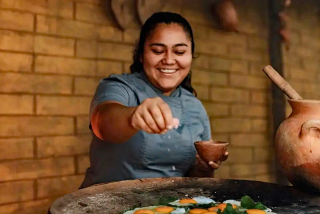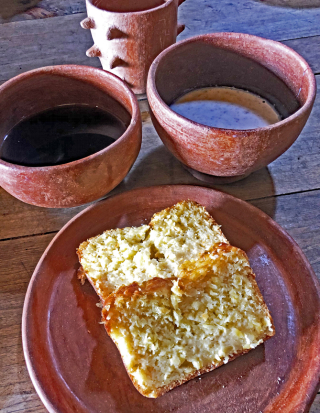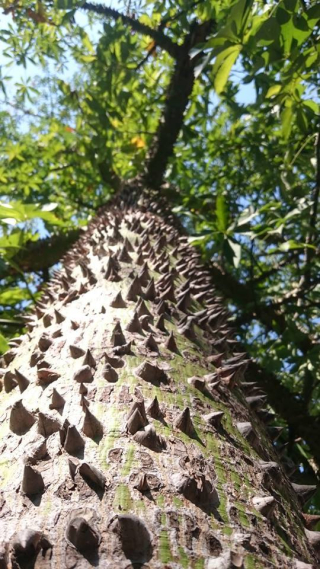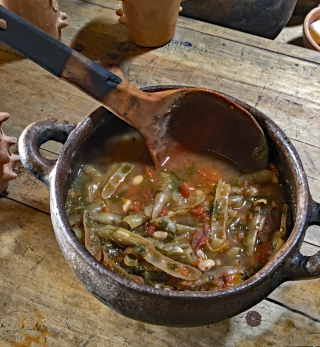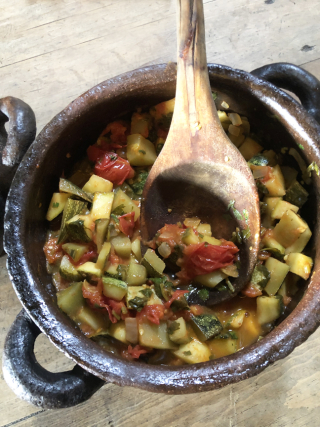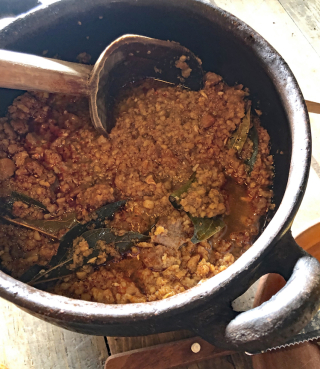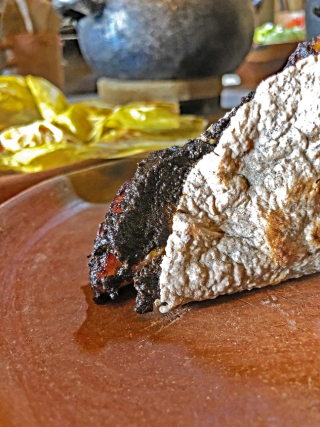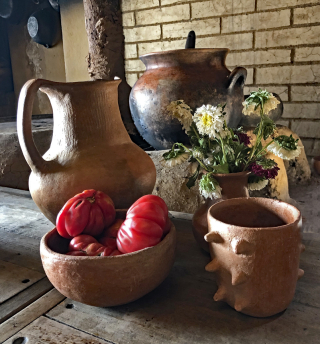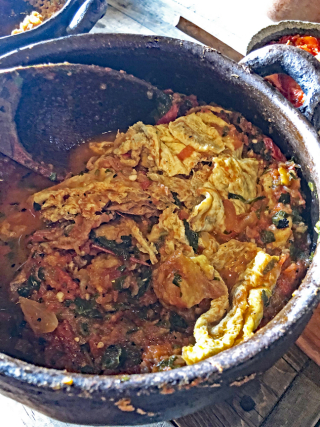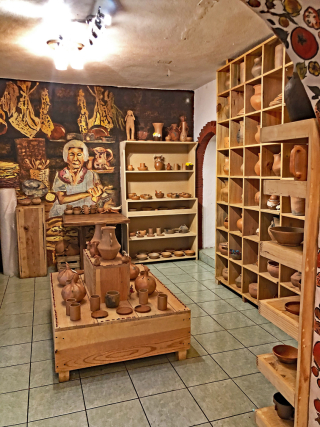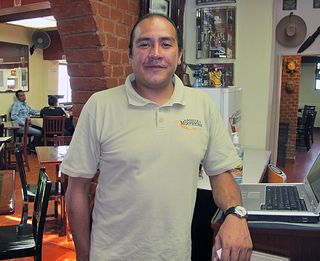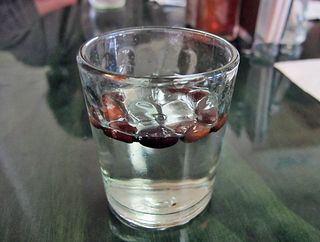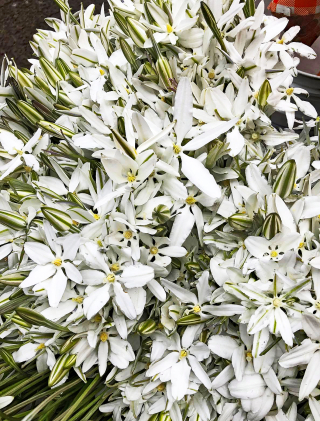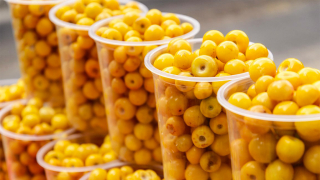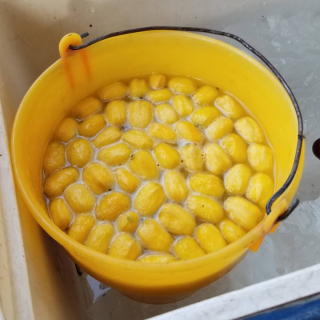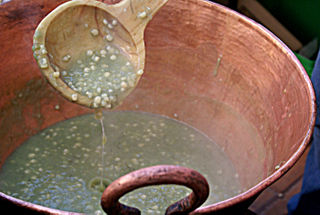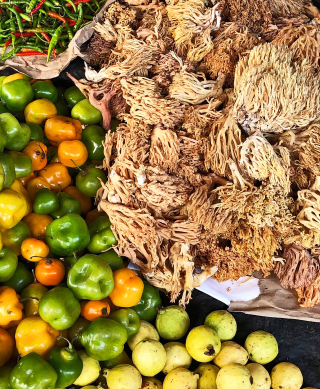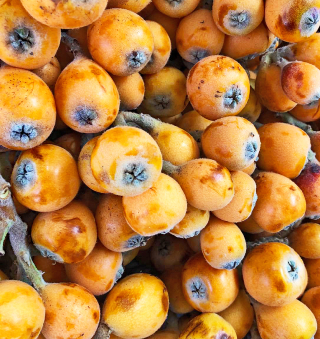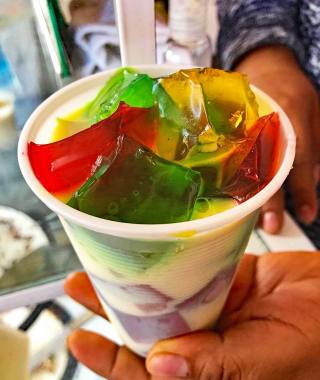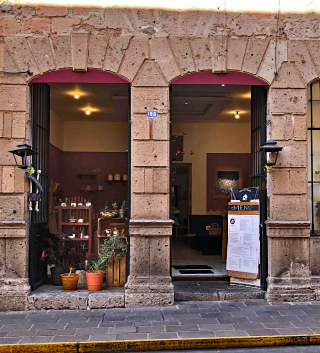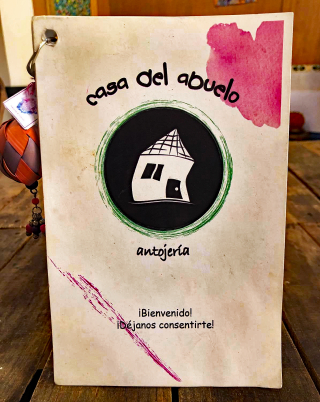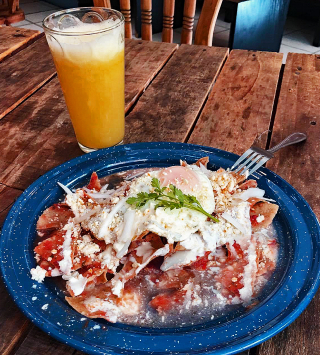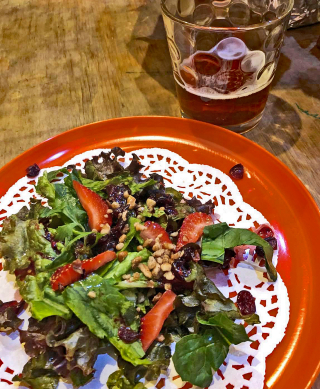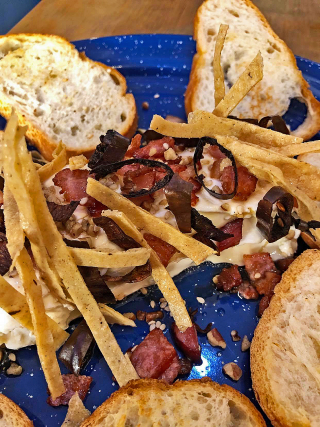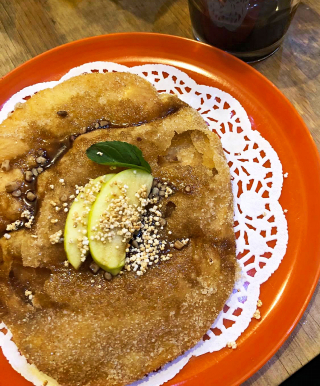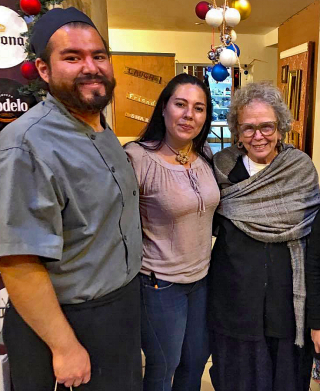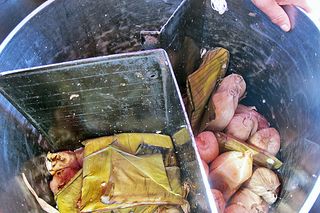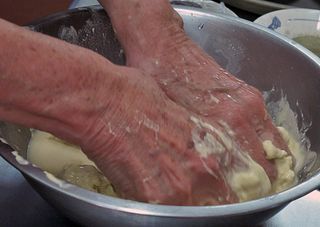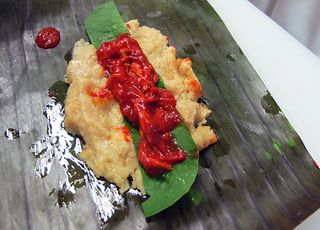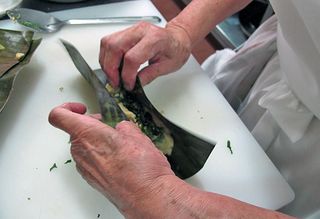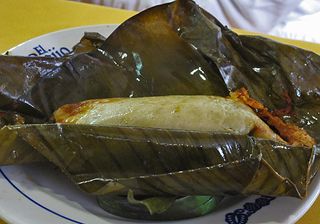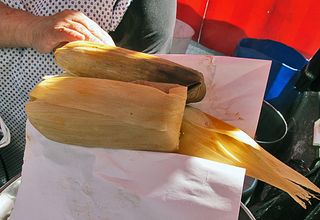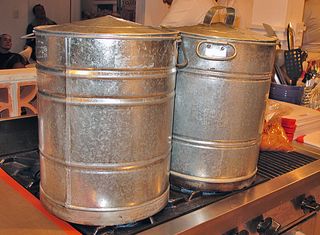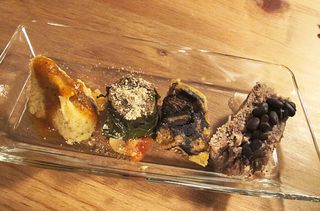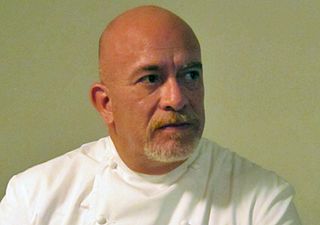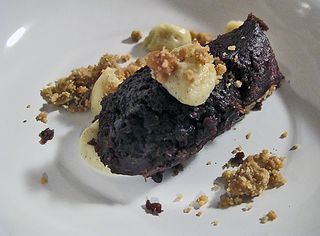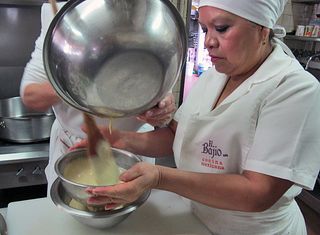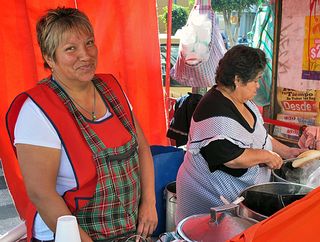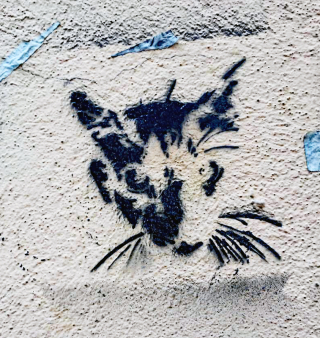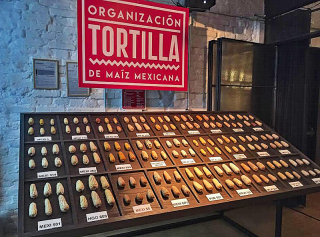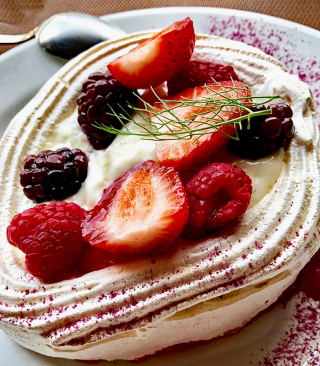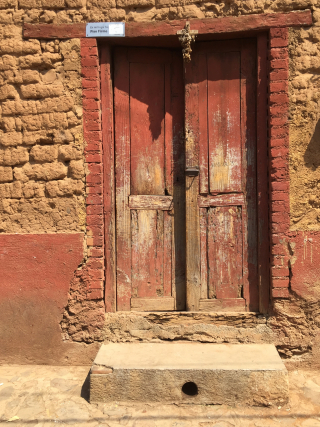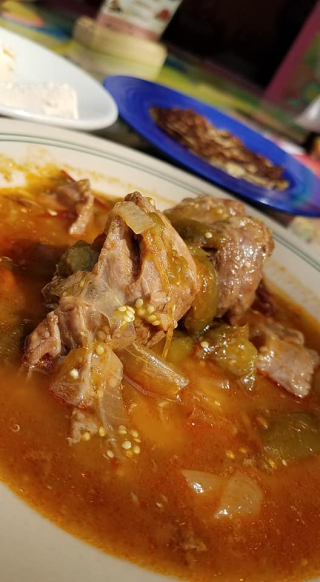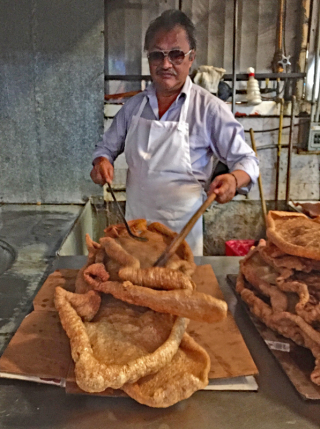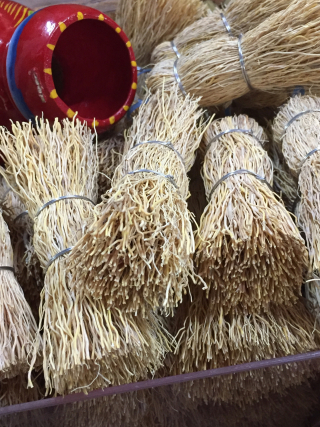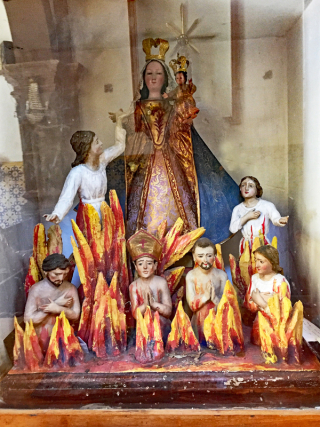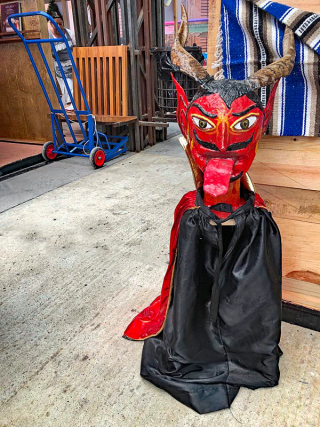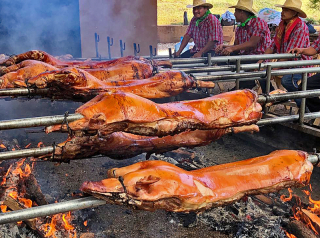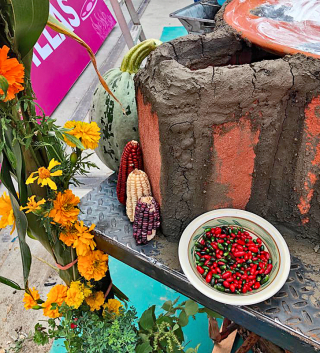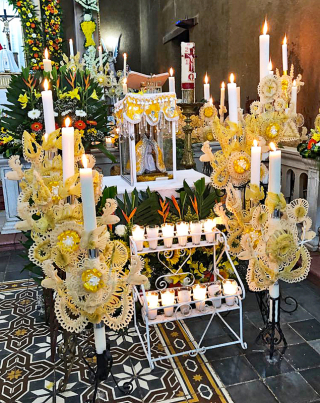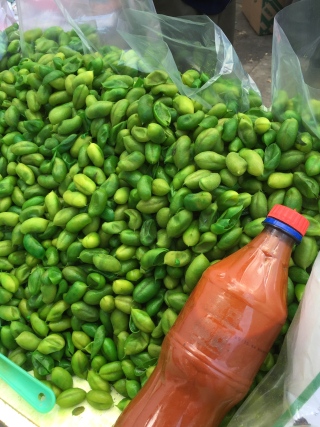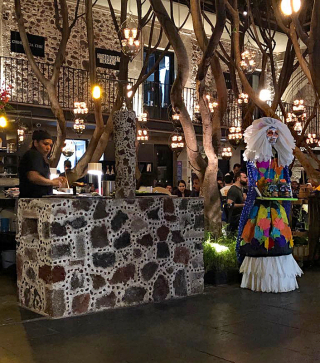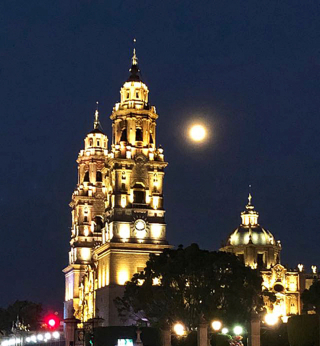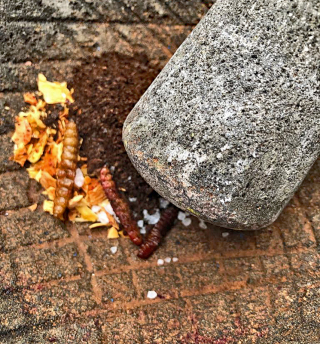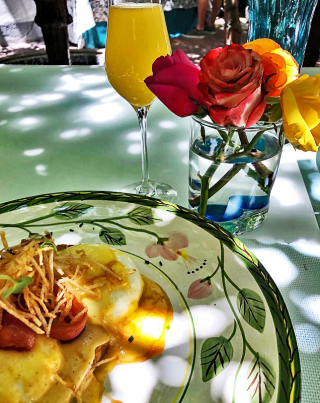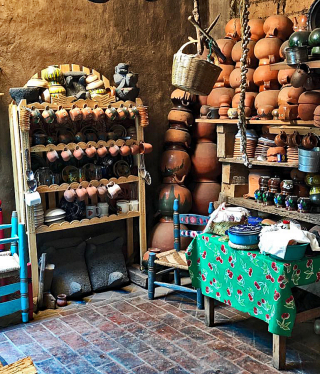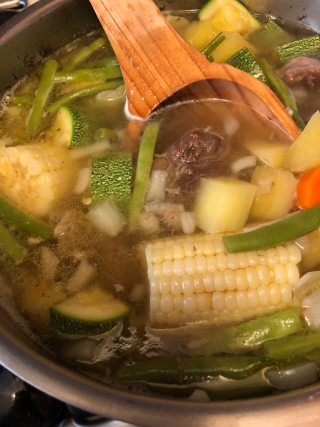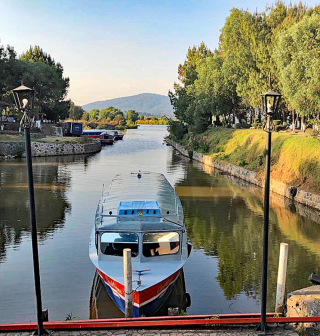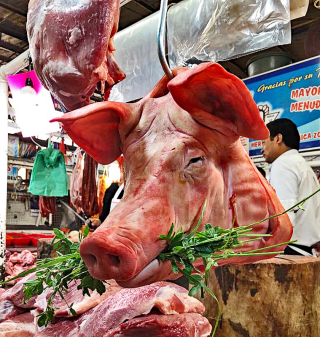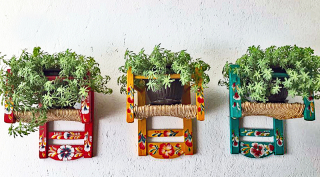Originally published in 2011, it's time to remind ourselves of the lifelong work done by these two men: Yuri de Gortari and Edumundo Escamilla. Their contribution to the culinary history and traditions of Mexico are not likely to be met by others in the field. They were unique and a treasure, and I was so fortunate to call them my friends.
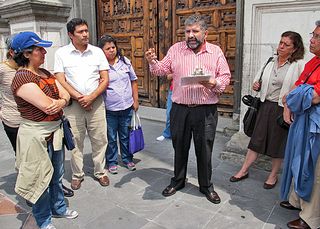
Standing at the doors of Mexico City's Catedral Metropolitana, maestro Edmundo Escamilla offers fascinating historical background about the pre-Hispanic marketplace at Tenochtitlán, the capital of the Mexica/Aztec empire. That enormous marketplace operated where the Zócalo (Mexico City's main square and the current site of the cathedral) now exists.
A few weeks ago, Mexico Cooks! received the announcement of a recorrido (walking tour) through Mexico City's enormous Mercado de la Merced. The tour would be given by none other than my good friends Edmundo Escamilla and Yuri de Gortari, the guiding lights who were until their deaths in charge of the Escuela de Gastronomía Mexicana. After I checked to make sure my favorite walking shoes were in good repair, I emailed back: Amigos, cuentan conmigo! (Friends, count on me!)
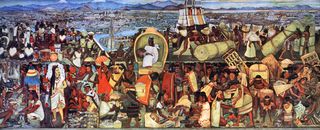
Diego Rivera's mural of the great market at pre-Hispanic Tenochtitlán, painted in 1945. Click on any photo for a better view.
Twenty of us hardy souls met at the front door to Mexico City's Catedral Metropolitana for a history lesson to begin our tour. Edmundo–an incredible repository of knowledge about all things Mexican–gave us a talk about the ancient market of Tenochtitlán, about food records just after the Spanish arrived in the New World, and about the evolution of farm-to-market transportation.
For example, the Mexica (the indigenous rulers who later became known to the world as the Aztecs) were the businessmen and tax collectors of that era. They kept records of all that was bought and sold in the market at Tenochtitlán, and demanded high tributario (tax payment) from the market vendors. When the Spanish conqueror Hernán Cortés realized how the Mexica were conducting their lucrative business, he decreed that taxes must no longer be paid to the Mexica. Instead, the taxes were suddenly payable to none other than Cortés.
Transportation of goods to market has also changed enormously. Today, we are accustomed to seeing huge amounts of produce, meats, fish, and every other sort of goods delivered to La Merced by trucks and other vehicles. Back in the days of the Mexica, on the other hand, the southern part of what is now Mexico City (notably what are now Chalco and Xochimilco) were connected to the marketplace of Tenochtitlán by waterways. Produce grown on the chinampas (island farms) of Xochimilco's canals was delivered to the central market by boat.
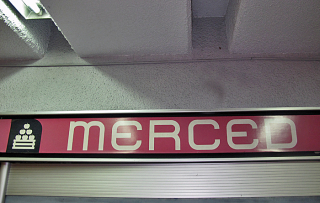
The huge market is large and important enough to have its own Metro station, on Line 1 (the pink line). Notice that the icon (to the left in the photo) for the Metro stop is a crate of fruit.
From the Cathedral, we boarded the Metro at the Zócalo, rode to Pino Suárez, and transferred to the pink line, traveling just one more stop to La Merced. When we entered the market, Yuri took the lead, we twenty participants trailed out behind like ducklings after their mother, and Edmundo brought up the rear. Each of us was armed with our cellular phone. In case one or more of us inadvertently became lost from the group, a simple call to the leaders' cell phone brought one of them to the rescue. The market is unbelievably enormous and packed with people. It has narrow aisles that were easy to miss when the front man turned left or right, the rear guard was straggling behind, and suddenly uh oh…where did they go? Fortunately the market is well-marked with aisle and booth numbers, making it easy to give a coordinate and just wait a couple of minutes to be retrieved.
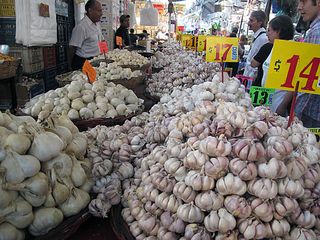
Yuri de Gortari (the man in the white shirt at the top right of the photo) talks with the vendor and some of the tour participants about the almost unbelievable quantities of different kinds of garlic for sale at this single booth.
No matter what you are looking for–produce of all kinds, kitchen utensils ranging from the smallest toothpick holder to the largest restaurant-size stove, household accessories like baskets, bags, and rope, or candy and other regional sweets–you are bound to find it at La Merced. Even though Mexico Cooks! was familiar with the market from prior visits, this guided tour gave our group insights that would be impossible to understand on a solo trip.
Let's let the diversity of the market speak for itself.
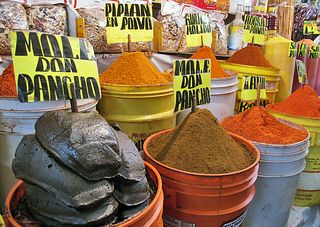
Moles in pastes and powders at Don Pancho's puesto (stand) at La Merced. There were easily ten other nearby stands offering tastes of every sort of mole.
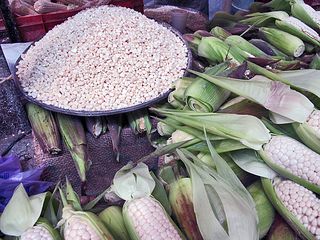
Here in Mexico, it's the season for fresh corn. This booth–and the next one, and the one after that, and the one around the corner, too–offer corn either as elotes (fresh and tender, on the cob) or already desgranado (taken off the cob). The fresh corn kernels in the bowl weighed about 25 pounds.
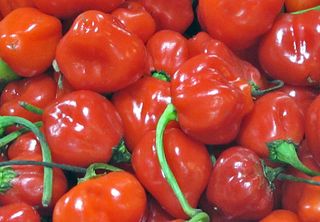
Up-close-and-personal with super-spicy Red Savina chiles habaneros, which have a rating of 580,000+ on the Scoville Scale. Bite into one at your own risk! This variety is just an example of the many kinds of chiles available at La Merced.
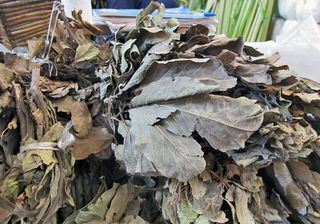
Bundles of dried avocado leaves. Pulverize some in your blender, then cook the resulting powder in a pot of beans to add the leaves' subtle anise flavor.
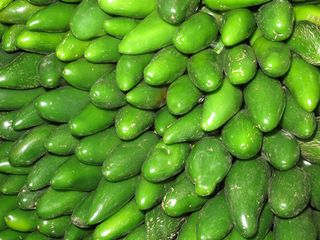
Cucumbers? No–these are stacks of neatly displayed fresh chiles jalapeños.
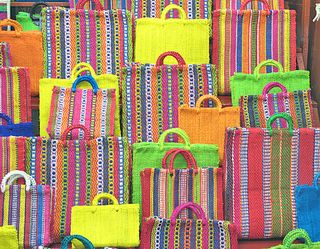
The original eco-friendly bolsa de ixtle. These colorfully dyed-woven ixtle shopping bags have been made of maguey cactus fiber since pre-Hispanic times.
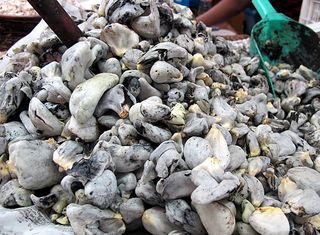
Huitlacoche (corn fungus) is one of Mexico's true delicacies. This foot-high pile of the fungus has been removed from the fresh corn cob, but it's also available on the cob.

Small candies, sold in the quantity you need–anything from 100 grams to numerous kilos.

Freshly harvested nopales (cactus paddles) stacked in pillars taller than a man.

Fresh morel mushrooms. This sought-after mushroom grows wild in Mexico's forests and is harvested during our rainy season–from about July 1 till the beginning of November.

Much used as a garnish for tacos in Mexico City and the surrounding area, the leaf of the papaloquelite is shaped like butterfly wings. Its name is derived from the Nahuatl word papalotl (butterfly). This native herb pre-dates the introduction of cilantro, imported by the Chinese to Mexico.

On the left, dried jamaica blossoms (a kind of hibiscus) grown in Mexico. On the right, jamaica imported from the Sudan. The prices are per quarter kilo (about one-half pound). The unfortunate reality is that the higher-quality Mexican blossoms are more expensive than the imported version. Most people prefer to buy Mexican-grown products, but price can be a deterrent. These flowers are used primarily to prepare agua de jamaica, a refreshing cold drink enjoyed copiously all over the República.
Our walking tour ended after several hours at the Mercado de la Merced. Filled with new information and great respect for our tour guides' knowledge, I arrived at home extremely satisfied and tired to the bone.
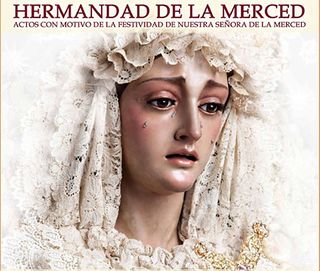
September 24 is the feast day of Nuestra Señora de la Merced (Our Lady of Mercies), the patron of the Mercado de la Merced. She is feted there every year with mariachis, flowers, and every sort of celebration. If you are reading this on her feast day, know that Mexico Cooks! is at the market for the celebration.
Looking for a tailored-to-your-interests specialized tour in Mexico? Click here: Tours.
